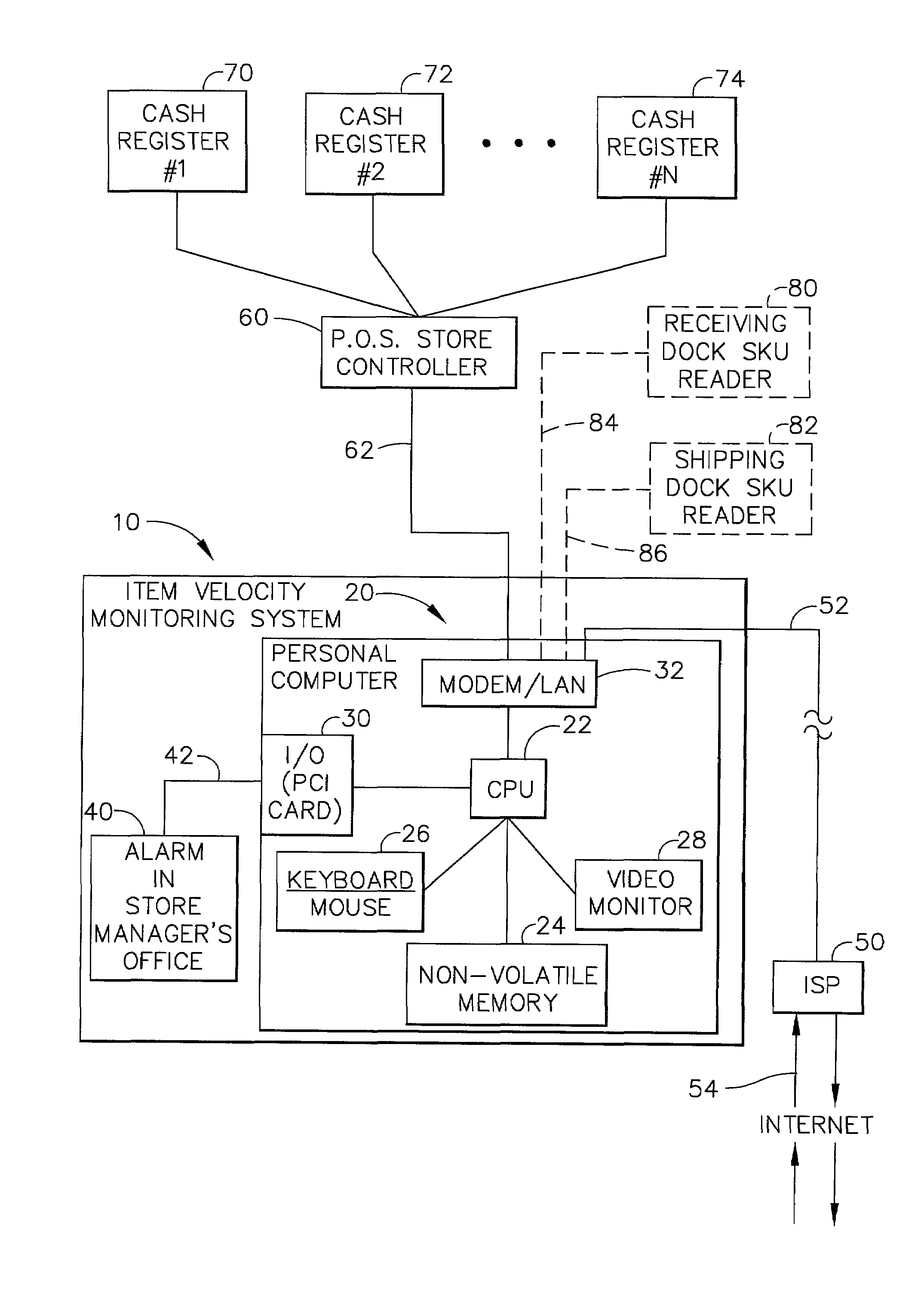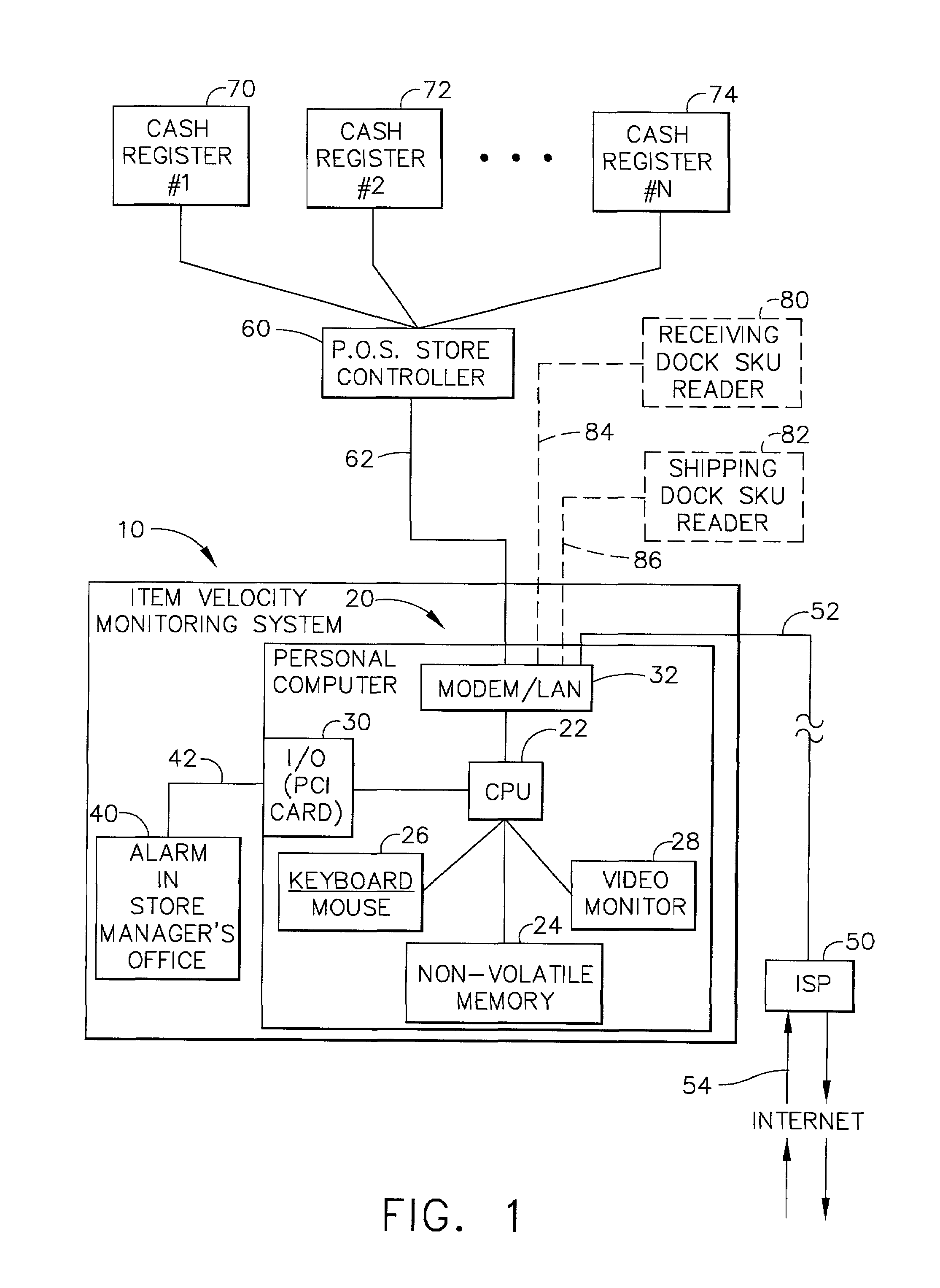Method and apparatus for monitoring the flow of items through a store or warehouse
a technology of inventory monitoring and flow monitoring, applied in the direction of instruments, apparatus for dispensing discrete objects, marketing, etc., can solve the problems of increasing order and shipping costs, affecting the loyalty of consumers, and general undesirable stock-out conditions of retailers and suppliers, etc., to achieve the effect of establishing the loyalty of consumers
- Summary
- Abstract
- Description
- Claims
- Application Information
AI Technical Summary
Benefits of technology
Problems solved by technology
Method used
Image
Examples
Embodiment Construction
[0036]Reference will now be made in detail to the present preferred embodiment of the invention, an example of which is illustrated in the accompanying drawings, wherein like numerals indicate the same elements throughout the views.
[0037]In one aspect of the present invention, an item velocity monitoring system is provided which interfaces with a consumer retail store (e.g., a grocery store) that has several cash registers that are tied into a “point of sale” (P.O.S., or POS) store controller, or which interfaces to a data warehouse or other data storage system where current POS transaction data, or hourly or daily POS data summaries, are retained. The item velocity monitoring system includes a personal computer for most retail store applications, although larger computers or smaller modular computers could be used, depending upon the quantity of real time data that is to be processed. A bulk memory device is typically provided to store data in real time, and a modem or LAN is provi...
PUM
 Login to View More
Login to View More Abstract
Description
Claims
Application Information
 Login to View More
Login to View More - R&D
- Intellectual Property
- Life Sciences
- Materials
- Tech Scout
- Unparalleled Data Quality
- Higher Quality Content
- 60% Fewer Hallucinations
Browse by: Latest US Patents, China's latest patents, Technical Efficacy Thesaurus, Application Domain, Technology Topic, Popular Technical Reports.
© 2025 PatSnap. All rights reserved.Legal|Privacy policy|Modern Slavery Act Transparency Statement|Sitemap|About US| Contact US: help@patsnap.com



